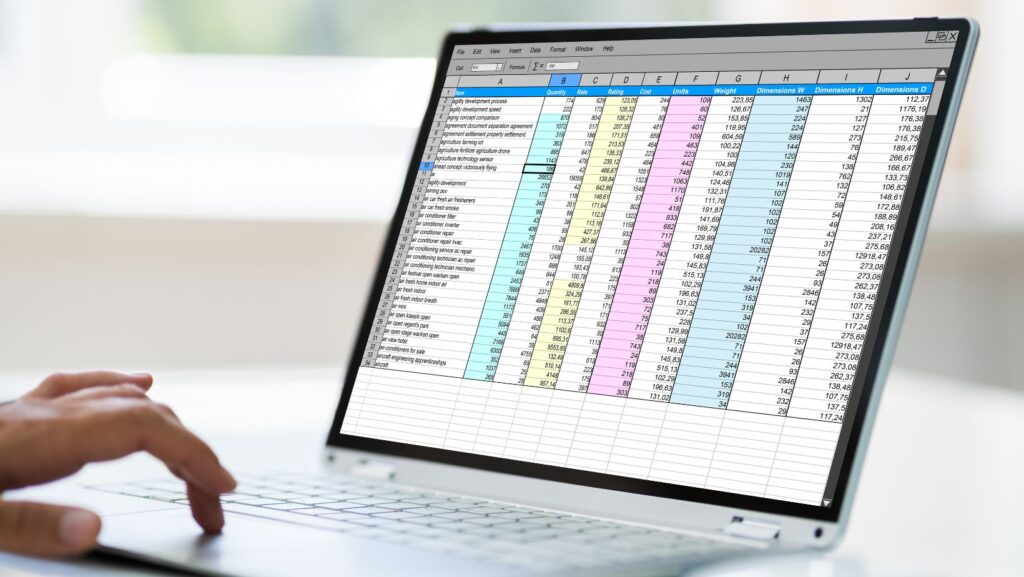Reality Check: Automation Is the Real Productivity Curve
Automation isn’t about being an Excel “wizard.” It’s about reclaiming your mental bandwidth for higher-order thinking. Whether you’re an educator tracking student growth or a founder juggling invoices, your spreadsheet should work for you—not the other way around.
Every time you manually reformat a dataset, copy formulas across sheets, or reconcile data by hand, you’re burning time and multiplying risk. Excel automation is the systems-level answer to both problems: it replaces busywork with clarity, and repetition with reliability.
The Framework: The Four Levels of Excel Automation
Let’s zoom out and think like a systems strategist. Building automation in Excel follows the same cognitive arc as mastering test prep—you scaffold knowledge in deliberate layers.
1️⃣ Template Setup — Build a Stable System Before You Automate
A clean, reliable template is your foundation. Most users skip this step, but it’s the difference between a spreadsheet that breaks and one that scales.
- Use structured tables (Ctrl + T) to contain your data.
- Lock cell references intentionally—$A$1 means “no surprises.”
- Create an Inputs tab (assumptions) and an Outputs tab (dashboards).
- Version your files: Template_Master_v1, Template_Live_v2, etc.
Templates aren’t decoration—they’re guardrails that prevent user error and enable repeatability.
2️⃣ Formula Automation — Turning Logic into Leverage
Formulas are your first line of automation. They convert intuition into reproducible logic.
- Replace lookup chaos with XLOOKUP or INDEX-MATCH.
- Use FILTER, UNIQUE, and TEXTJOIN for dynamic data sets.
- Clean formulas with LET and safeguard them using IFERROR.
If you’re building fluency, keep a working library like “101 Advanced Excel Formulas & Functions Examples.” Not as a trivia list—but as a strategy guide. The goal isn’t to memorize formulas—it’s to know which one reduces human friction at scale.
3️⃣ Workflow Automation — Linking Templates Into Systems
Once your formulas are stable, connect your processes.
- Automate imports with Power Query—pull data from CSVs, web APIs, or databases.
- Use Power Pivot to model relationships (e.g., customers → invoices → payments).
- Establish a refresh cycle: Import → Transform → Calculate → Export.
Here’s where most users go wrong—they automate chaos. Don’t start coding macros until your workflow itself is clean, linear, and well-documented.
4️⃣ VBA Mastery — Building Macros That Think Like You
Visual Basic for Applications (VBA) is Excel’s native language for real automation.
- Record before you write. Let the Macro Recorder teach you syntax.
- Modularize your code. Break big macros into subroutines (Sub CleanData, Sub FormatDashboard).
- Add error handling. Use On Error Resume Next wisely—it’s your seatbelt.
- Document every macro. Future-you will thank you.
Macros are the essay portion of Excel—they test how well you can structure your reasoning. Once your logic is sound, your macros become a repeatable test score.
Real-World Examples in Action
Example 1: The Educator’s Grading Dashboard
A tutoring center moves from manual grading to an automated dashboard using Power Query and VBA email triggers. Now, every Friday, Excel automatically sends PDF progress reports to parents.
→ Result: Two hours of weekly data entry cut to five minutes; 95% fewer manual errors.
Example 2: The Retail Cash Flow Engine
A local store links sales, inventory, and expense tabs using Power Pivot. One macro refreshes data, updates charts, and exports a 13-week cash flow summary.
→ Result: Real-time visibility into working capital—without a single copy-paste.
Example 3: The Admissions Counselor’s Scholarship Tracker
A macro parses student award letters, extracts cost data, and updates a comparison dashboard.
→ Result: Families visualize net costs instantly; counselor workload cut in half.
Automation isn’t replacing the human—it’s releasing the human to think again.
Why Automation Works (and Why It’s the Future)
Cognitive science tells us: working memory is finite. Every redundant click taxes your attention. Studies on spreadsheet error rates reveal 1–5% of all manually entered cells contain mistakes—a reminder that humans are fallible, but systems are scalable.

Automation enforces structure. Your workbook becomes a miniature ecosystem: inputs, logic, and outputs flow predictably. Just as Brooke Hanson teaches students to build essay scaffolds before writing, Excel users should scaffold data architecture before analysis.
Practice Over Panic: Build Your Automation Habit
You don’t need to “learn VBA overnight.” You need to iterate strategically. Try this framework:
- Pick one repetitive task. Invoice cleanup, test score logging, or budget updates.
- Document it step by step. Pretend you’re teaching it to someone else.
- Automate one layer. Start with formulas or Power Query.
- Test for accuracy. Compare automated vs. manual results.
- Add a macro once the process is consistent.
This is how smart test-takers—and smart analysts—build confidence: small, structured wins.
Common Mistakes to Avoid
- Over-Automating: Don’t code macros for constantly changing processes. Automate stability first.
- Ignoring Documentation: Always include a “ReadMe” tab explaining file logic and update frequency.
- Skipping Version Control: Save incrementally (v1.0, v1.1, etc.) and keep a clean master copy.
- No Error Checks: Use ISERROR, validation lists, and alert boxes.
Automation without governance is chaos wearing a tie.
The Systems-Level Takeaway
Automation is strategic design. It’s what separates the reactive spreadsheet user from the architect who builds a self-running ecosystem. The true goal isn’t to “save time”—it’s to buy clarity.
When you automate Excel, you’re doing more than cleaning data—you’re thinking like an admissions strategist: diagnosing inefficiencies, designing repeatable processes, and measuring results. The payoff is exponential. One hour spent automating today saves ten hours this quarter.
Let’s be clear: the goal isn’t to “use macros.” It’s to own your workflow. Build once, test twice, trust forever.
Download & Learn Resources
- Template Starter Kit: Pre-built dashboards and trackers for finance, education, and sales.
- Power Query Quickstart Guide: Step-by-step import and transformation workflows.
- Macro Practice Workbook: Record, edit, and debug safely.
- Advanced Formula Reference: Bookmark-worthy “101 Advanced Excel Formulas & Functions Examples.”
Final Thought:
Automation is a form of academic discipline—structured, data-literate, and iterative. Once your spreadsheets start running themselves, your focus returns to what really matters: strategy, insight, and impact.
Just like mastering standardized tests, mastering Excel automation isn’t about talent—it’s about building a system that works, every single time.



